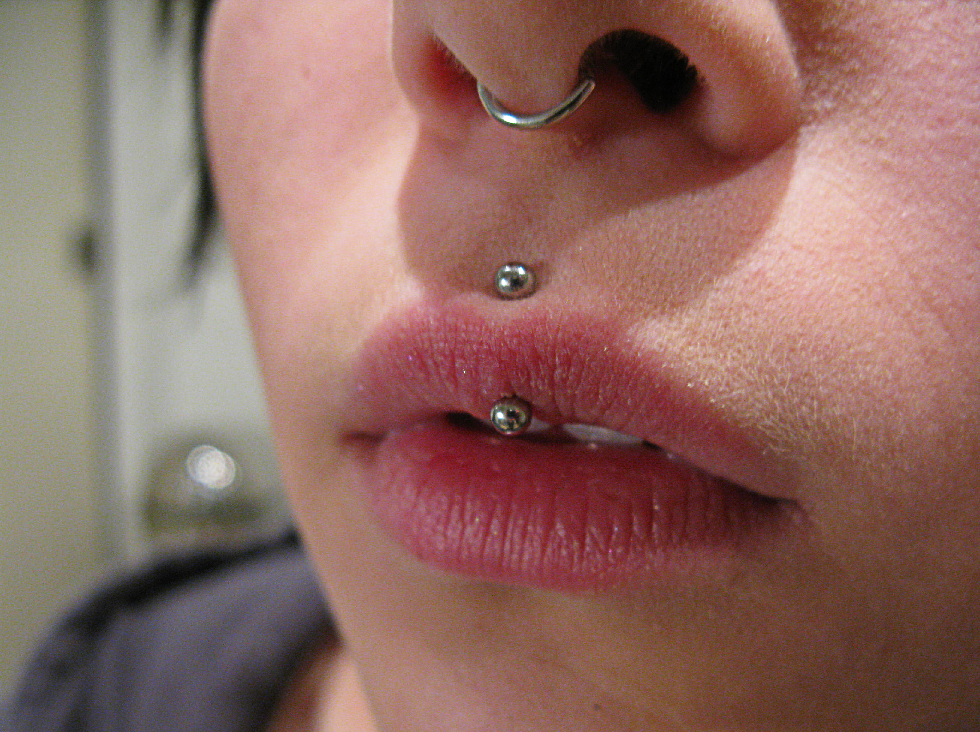Medusa piercing has become a rising trend in the world of body art and self-expression. It’s not just a piercing; it’s a statement that reflects your unique personality and style. Whether you’re considering getting one or simply curious about this unique facial modification, this guide will cover everything you need to know about medusa piercings.
From its origins to modern-day popularity, medusa piercing continues to captivate those who seek a bold yet subtle way to enhance their appearance. This piercing, located directly in the philtrum—the groove between the nose and upper lip—has gained traction due to its aesthetic appeal and versatility.
In this article, we’ll explore the ins and outs of medusa piercings, including its history, placement, aftercare tips, potential risks, and styling ideas. Whether you're a piercing enthusiast or new to the world of body modifications, this guide will provide all the information you need to make an informed decision.
Read also:Rodney Ramone Hill Iii The Rising Star In The Entertainment World
Table of Contents
- What is a Medusa Piercing?
- History of Medusa Piercing
- Placement and Types of Medusa Piercings
- Choosing the Right Jewelry for Your Medusa Piercing
- Aftercare Tips for a Medusa Piercing
- Risks and Complications of Medusa Piercings
- Cost and Expertise in Medusa Piercings
- Styling Ideas for Medusa Piercings
- Frequently Asked Questions About Medusa Piercings
- Conclusion: Is a Medusa Piercing Right for You?
What is a Medusa Piercing?
A medusa piercing is a type of facial piercing located in the philtrum, the vertical groove that runs from the bottom of the nose to the upper lip. This piercing gets its name from the mythological figure Medusa, known for her snake-like hair and petrifying gaze. The placement of the piercing mimics the position of Medusa’s iconic facial feature, adding an element of mystique and allure.
While medusa piercings are relatively new compared to other facial piercings, they have quickly gained popularity due to their unique placement and aesthetic appeal. Many people choose this piercing because it enhances the natural contours of the face without being overly noticeable.
Variations of Medusa Piercings
There are several variations of medusa piercings, including:
- Vertical Medusa Piercing: Pierced vertically through the philtrum.
- Horizontal Medusa Piercing: Pierced horizontally, offering a more subtle look.
- Double Medusa Piercing: Two piercings placed symmetrically for a more dramatic effect.
History of Medusa Piercing
The medusa piercing, like many other body modifications, has its roots in ancient cultures. While the exact origin is unclear, piercings in the philtrum area have been practiced in various forms across different civilizations. In some cultures, philtrum piercings were believed to have spiritual or medicinal significance.
In modern times, the medusa piercing emerged as a trend in the early 2000s, gaining popularity among celebrities and influencers. Its rise can be attributed to its ability to enhance facial symmetry and add a touch of elegance to one's appearance.
Mythological Inspiration
The name "medusa" draws inspiration from Greek mythology, where Medusa was a Gorgon with snakes for hair. Her piercing gaze was said to turn anyone who looked at her into stone. This mythical connection adds a layer of intrigue to the piercing, making it a popular choice for those who appreciate symbolism and storytelling.
Read also:Unlocking The Potential Of 18 Indo A Comprehensive Guide
Placement and Types of Medusa Piercings
The placement of a medusa piercing is crucial for achieving the desired aesthetic. Ideally, the piercing should be centered in the philtrum, ensuring symmetry and balance. The depth of the piercing can vary depending on the individual's anatomy, but it is generally shallow to avoid discomfort.
There are several types of medusa piercings, each offering a unique look:
- Surface Piercing: A shallow piercing that sits just beneath the skin.
- Deep Piercing: A more invasive piercing that goes deeper into the philtrum.
- Curved Piercing: A piercing that follows the natural curve of the philtrum for a more dynamic appearance.
Choosing the Right Placement
When deciding on the placement of your medusa piercing, consider factors such as facial structure, skin thickness, and personal preference. Consulting with a professional piercer is essential to ensure the piercing is performed safely and accurately.
Choosing the Right Jewelry for Your Medusa Piercing
Selecting the right jewelry is vital for the comfort and longevity of your medusa piercing. Common options include:
- Straight Barbells: Ideal for vertical piercings, offering a clean and classic look.
- Captive Bead Rings: Perfect for those who prefer a more circular design.
- Labret Studs: A popular choice for their versatility and variety of styles.
It’s important to choose jewelry made from high-quality, hypoallergenic materials such as surgical steel, titanium, or 14k gold to minimize the risk of irritation or infection.
Aftercare Tips for a Medusa Piercing
Proper aftercare is essential for ensuring your medusa piercing heals correctly and remains healthy. Follow these tips to maintain the health of your piercing:
- Clean Regularly: Use a saline solution or mild soap to clean the area twice daily.
- Avoid Touching: Keep your hands away from the piercing to prevent infection.
- Protect During Sleep: Use a clean pillowcase and avoid sleeping on the piercing.
Healing times can vary, but most medusa piercings take 6-8 weeks to fully heal. During this time, avoid exposing the piercing to harsh chemicals, such as those found in makeup or skincare products.
Risks and Complications of Medusa Piercings
Like any piercing, medusa piercings come with potential risks and complications. These include:
- Infection: Poor hygiene or improper aftercare can lead to infections.
- Migration: The piercing may move or shift over time, requiring repositioning.
- Rejection: In some cases, the body may reject the piercing, causing it to heal over.
To minimize these risks, always choose a reputable piercer and follow their aftercare instructions carefully.
Cost and Expertise in Medusa Piercings
The cost of a medusa piercing can vary depending on factors such as location, piercer experience, and jewelry type. On average, you can expect to pay between $30 and $100 for the procedure. Investing in a skilled piercer is crucial for achieving a safe and aesthetically pleasing result.
When choosing a piercer, look for someone with experience in facial piercings and a portfolio of satisfied clients. Ask about their sterilization practices and ensure they use single-use needles for each piercing.
Styling Ideas for Medusa Piercings
Medusa piercings offer endless styling possibilities, allowing you to express your individuality. Consider these ideas to enhance your look:
- Minimalist Approach: Opt for small, subtle jewelry for a understated appearance.
- Bold Statements: Choose larger, more intricate pieces to make a bold fashion statement.
- Colorful Accents: Incorporate gemstones or colored beads for a pop of color.
Experiment with different styles to find what works best for you and complements your overall aesthetic.
Frequently Asked Questions About Medusa Piercings
1. Does a Medusa Piercing Hurt?
While pain tolerance varies from person to person, most people describe medusa piercings as a sharp, quick pain that subsides quickly. The philtrum area is less sensitive than other facial areas, making the procedure relatively painless.
2. Can I Sleep on My Medusa Piercing?
It’s best to avoid sleeping on your medusa piercing during the healing process. Use a clean pillowcase and consider sleeping on your back to protect the piercing.
3. How Long Does a Medusa Piercing Take to Heal?
Medusa piercings typically take 6-8 weeks to fully heal. During this time, follow proper aftercare instructions to ensure a smooth recovery.
Conclusion: Is a Medusa Piercing Right for You?
A medusa piercing is a unique and stylish way to enhance your appearance and express your individuality. With proper care and maintenance, it can become a long-lasting addition to your body art collection. Before getting a medusa piercing, consider factors such as placement, jewelry choice, and aftercare requirements to ensure the best possible outcome.
Whether you’re ready to take the plunge or still exploring your options, remember that a medusa piercing is a personal decision that should align with your style and preferences. Share your thoughts and experiences in the comments below, and don’t forget to explore other articles on our site for more body modification tips and inspiration!

